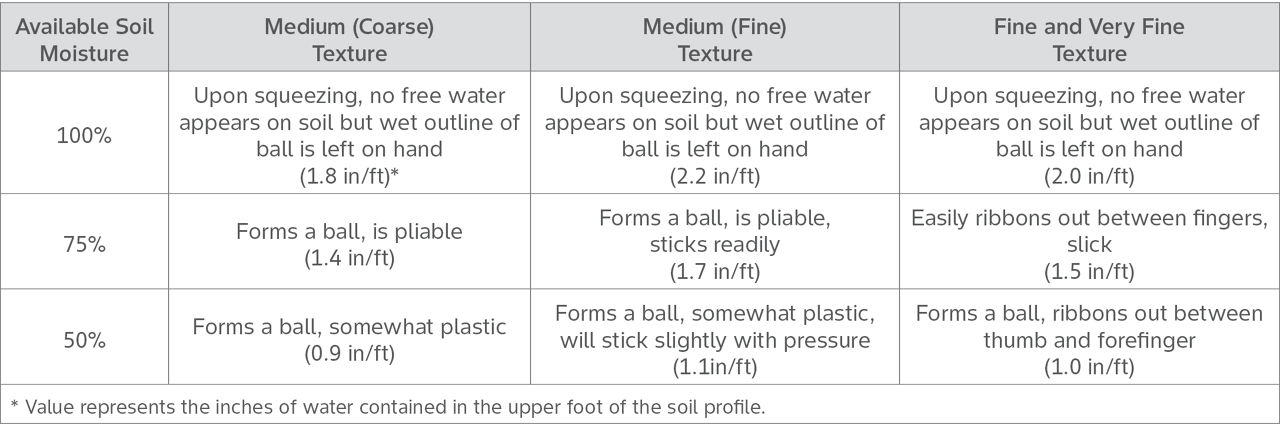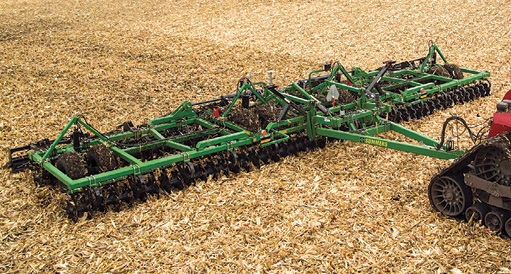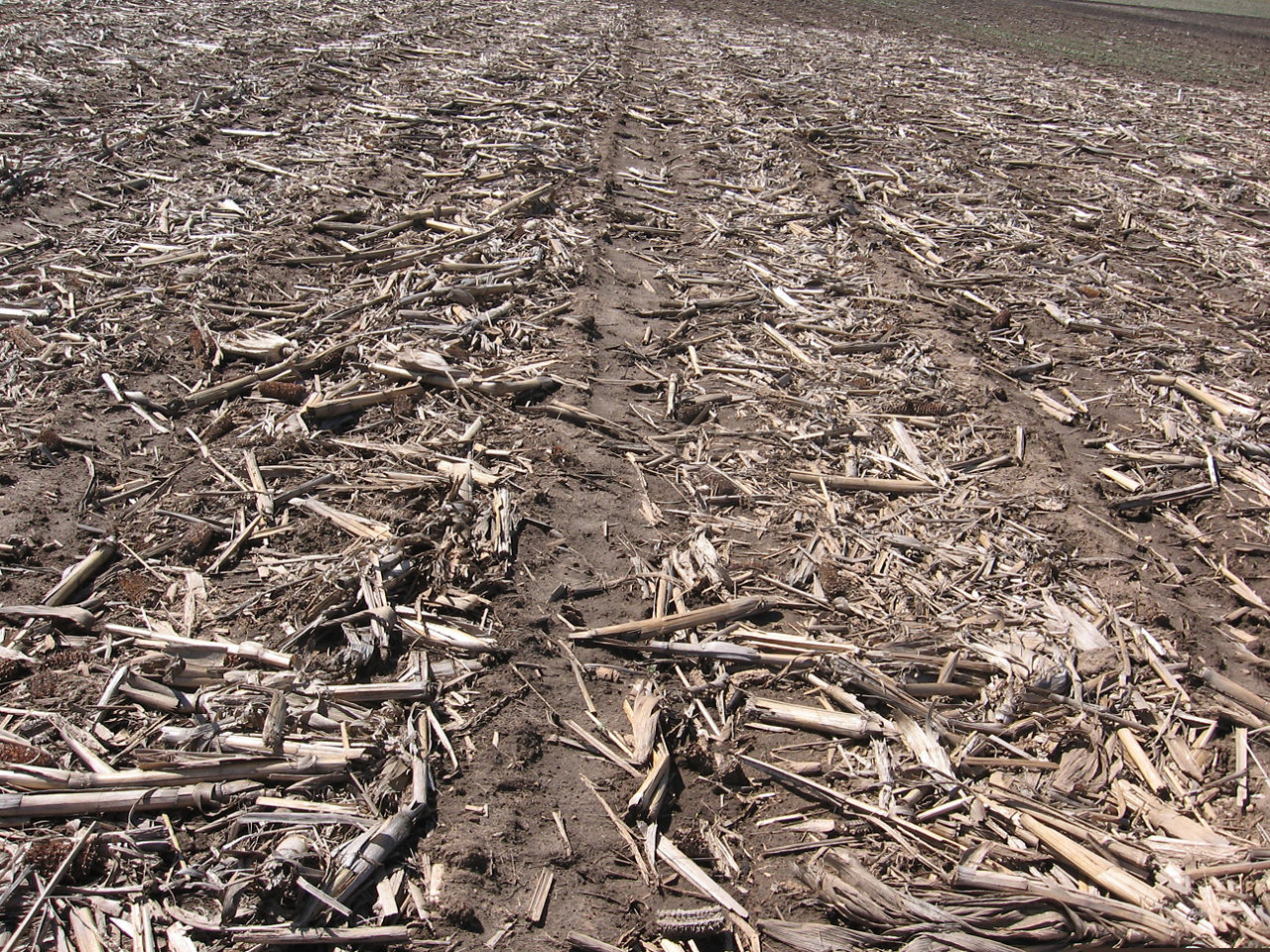5 MIN READ
Why Soil Moisture Can Impact Tillage Decisions
February 6, 2025
Almost every spring, moisture can impact the planting process. In a rush to “get the crop in on time,” seed bed preparation is conducted under wet soil conditions, usually leading to problems for the rest of the growing season. At the end of season, many growers like to do a primary tillage for residue management which, under wet soil conditions, can lead to soil compaction that impacts subsequent crops for many years.
Determining the Soil Moisture Condition
To determine if soil is in a workable condition, begin by estimating the soil moisture level using Table 1. To determine if the soil is fit to work, squeeze a ribbon of soil out between the thumb and index finger. If the soil ribbon breaks before reaching five inches in length, or if a ball of soil breaks apart when thrown into the air, the soil is fit to work. Portable moisture testers are also available from various manufacturers.
Table 1. Guide for judging how much moisture is available for crops according to soil texture.1

Possible Negative Impacts of Wet Soil
Using heavy equipment on wet soil can cause soil compaction, limiting the soil pore size and surface water penetration. The reduced water penetration in compacted soil causes surface water runoff, erosion, organic matter and nutrient loss—including nitrates, phosphorus, and others—and carries pesticide pollution to surface waters. Tilling compacted soil can further cause large, non-uniform clods that negatively impact seedbed preparation. This lack of uniformity within the tillage zone can in turn cause an inconsistent planting depth, resulting in uneven emergence.
Prior to conducting spring tillage, it is important to determine if soil compaction has occurred to avoid these negative impacts. A soil penetrometer or steel rod can be pushed to a depth of three feet and used to determine the level of compaction based on the level of resistance. It is best if the soil is wet when this test is done, as a penetrometer or steel rod may not be accurate when used on dry soil.
Solutions When Soil Is Wet
Spring1
- If possible, limit tillage to only the most essential, such as for weed control, leveling, or incorporating fertilizer or pesticides.
- Utilize no-till or strip till systems.
- Use fluted coulters, residue cleaners, and row sweeps to help warm the top few inches of the seed row.
Fall2
Short Term
- Manage crop residue to create a uniform distribution across the field, but avoid shredding to allow better air movement and increase soil moisture evaporation.
- Utilize a reduced tillage system, such as strip tillage after harvest.
- Equip planter with residue cleaners or fluted coulters to help warm the top few inches of soil.
- Establish cover crops, which will remove excess water as well as increase soil health.
Long Term
- Use a tile system to help remove excess water.
- Utilize grass waterways and buffer strips to help direct water and remove excess soil moisture.
- Incorporate cover crops as a mechanism to extract soil moisture, improve soil organic carbon, soil porosity, and to contribute to warming the uppermost inches of soil.
The important thing to remember on wet soils is to not do anything that will further increase compaction. It is better to wait for appropriate soil moisture levels rather than to increase the compaction problem by running heavy equipment on wet soils that are already compacted.
Other Recommendations3,4
- Fill in tire ruts from the fall with light tillage by running equipment at an angle, which may require two or three passes.
- Keep tillage shallow, such as with disking and vertical tillage, to fluff and incorporate residue and to incorporate air into the soil (Figure 1). On wet soil, try to operate equipment no deeper than three inches.


- A strip tillage system is another option for wet soil.
- Avoid lifting wet soil, which can create clods, and use equipment settings that limit soil movement.
- Reduce equipment weight, maintain tire air pressure to reduce tire slippage, and keep axle loads under 10 tons.
- Use the lightest tractor that can still provide the necessary horsepower.
- Unload the combine before the grain hopper is full to limit axel loads.
- Limit wheel traffic by running in the previous combine tracks, reducing the compacted area. 80% of compaction happens on the first pass.
- If possible, use frost tillage when there is a frost layer half an inch to an inch thick. Frozen soil can better support equipment weight and rain better infiltrates tilled frozen soil. The frozen soil plates created with frost tillage should quickly shrink as they thaw.
- When soils are dry in the future, use a deep tillage tool to help relieve the compacted areas.
Sources
1Al-Kaisi, M. 2019. Spring planting and wet soil management. Iowa State University Extension and Outreach, Integrated Crop Management News https://crops.extension.iastate.edu/cropnews/2019/03/spring-planting-and-wet-soil-management
2Al-Kaisi, M. 2019. Managing wet and cold soils. Iowa State University Extension and Outreach, Integrated Crop Management News. https://crops.extension.iastate.edu/cropnews/2019/02/managing-wet-and-cold-soils
3DeJong-Hughes, J. and Coulter, J. 2021. Fall tillage in wet soil conditions. University of Minnesota Extension. https://extension.umn.edu/soil-management-and-health/fall-tillage-wet-soil-conditions
4van Es, H.M. and Schindelbeck, R.R. 1995. Frost tillage for soil management in the northeastern USA. Journal of Minnesota Academy of Science. 59(2): 37–39. https://digitalcommons.morris.umn.edu/cgi/viewcontent.cgi?article=2344&context=jmas
1017_156297